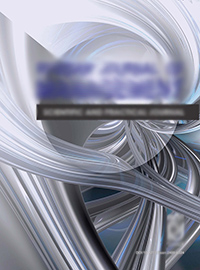The aim of this study was to evaluate the stiffness of liver tumors using compression and ARFI elastography. Compression and ARFI elastography was performed to study the color display rigidity in the foci of the liver in 69 and 81 patients, respectively. Area of interest was placed in the education and on the border with the surrounding liver parenchyma, to assess the visual difference tissue stiffness. Patients were divided by diagnosis: hepatocellular carcinoma – 36, cholangiocarcinoma – 6 metastases – 35, benign – 4 cases. Benign tumors included two focal nodular hyperplasia, hepatocellular adenoma and one cavernous hemangioma a large size. When compression elastography increased stiffness formations compared to the surrounding liver parenchyma was observed: in benign – 100%, hepatocellular carcinoma – in 71.9%, cholangiocarcinoma – 80%, metastases – in 72.4%. When ARFI elastography increased stiffness observed: in benign – 100%, hepatocellular carcinoma – 58.3%, cholangiocarcinoma – 100%, metastases – in 85.7%. Qualitative elastography improves the definition of clear boundaries neoplasm infiltration beyond the tumor, but can not differentiate between malignant and benign tumors. Sensitivity, accuracy, positive predictive value of the compressive elastography were as follows: 73, 69, 94%, and at ARFI elastography – 74, 70, 93%, respectively. Both techniques are qualitative elastography complement each other, with the specification of the internal structure of foci and their joint application sensitivity, accuracy, positive predictive value in the diagnosis of malignant tumors accounted for 83, 79, 95%, respectively. ARFI elastography in conjunction with compression elastography improves the visualization of malignant tumors of the liver and can be used as an additional diagnostic tool in oncohepatology.
Ultrasound, compression elastography, Acoustic radiation force impulse elastography, focal liver mass.
1. In vivo visualization of abdominal malignancies with acoustic radiation force elastography / Fa-hey B.J., Nelson R.C., Bradway D.P. [et al.]. Phys Med Biol. 2008. V. 53. N1. P. 279-293.
2. Acoustic Radiation Force Impulse (ARFI) ultrasound imaging of solid focal liver lesions / Gallotti A., D´Onofrio M., Romanini L. [et al.]. Eur J Radiol. 2012. 81. P. 451-455.
3. . Characterization of focal liver masses using acoustic radiation force impulse elastography / Park H., Park JY., Kim do Y. [et al.]. World J Gastroenterol. 2013. V. 19. N2. P. 219-226.
4. Liver elastography, comments on EFSUMB elastography guidelines 2013 / Cui X.W., Friedrich-Rust M., De Molo C. [et al.]. World J Gastroenterol. 2013. V. 19. N38. P. 6329-6347.
5. Doherty J.R., Trahey G.E., Nightingale K.R., Palmeri M.L. Acoustic radiation force elasticity imaging in diagnostic ultrasound. IEEE Trans Ultrason Ferroelectr Freq Control. 2013. V. 60. N4. P. 685-701.
6. Usefulness of acoustic radiation force impulse imaging in the differential diagnosis of benign and ma-lignant liver lesions / Shuang-Ming T., Ping Z., Ying Q. [et al.]. Acad Radiol. 2011. V. 18. N7. P. 810-815.
7. Cho S.H., Lee J.Y., Han J.K., Choi B.I. Acoustic radiation force impulse elastography for the evalua-tion of focal solid hepatic lesions: preliminary findings. Ultrasound Med Biol. 2010. V. 36. N2. P. 202-208.
8. Acoustic radiation force impulse elastography for hepatocellular carcinoma-associated radiofrequency ablation / Kwon H.J., Kang M.J., Cho J.H. [et al.]. World J Gastroenterol. 2011. V. 17. N14. P. 1874-1878.





